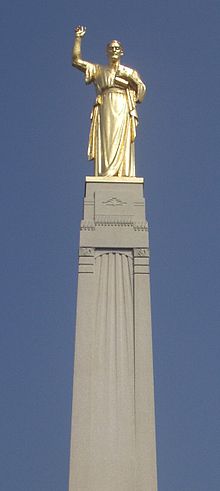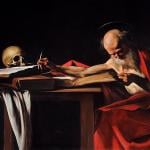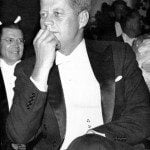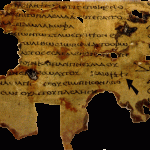
From an unpublished manuscript with which I occasionally tinker:
It is virtually impossible to imagine a hallucination that continued over weeks, months, and years, involving numerous people whose hallucinatory illusions were so coherent and congruent with one another—people who, apart from their religious views (unacceptable in principle to certain critics), supply no other reason to think them psychologically maladapted. Moreover, many of the events that seem to support Joseph Smith’s story occurred under wholly matter-of-fact conditions: David Whitmer and Oliver Cowdery climbing onto the Hill Cumorah and seeing the stone box from which the plates were taken. Emma Smith feeling the plates through their thin muslin cloth, moving them around while she does housework. Lucy Mack Smith seeing the breastplate. The eight witnesses themselves, standing in a clearing in the woods and leafing through the plates. William Smith estimating their weight at about sixty pounds. As Richard Lloyd Anderson has pointed out,
The official witnesses gave their names to two documents that outlined their experiences in seeing the plates in June, 1829. Yet the plates figured in the regular life of Joseph Smith for over a year and a half prior to that. He worried about obtaining them, guarded them carefully during this period, and used them in translation for many months. This meant that those nearest him shared in his strategies for preserving and using them. So a larger circle than the official witnesses had some contact with the ancient record in their daily affairs. The plates were brought to Father Smith’s home in Manchester, New York,; then taken to the Prophet’s home in Harmony, Pennsylvania; after which they were transported to Father Whitmer’s home in Fayette, New York, to finish the translation.[1]
Gary Habermas’s comment about Christ’s appearance to the eleven apostles is precisely relevant here, and worth repeating: “Hallucinations are private events observed by one person alone. Two people cannot see the same hallucination, let alone eleven.” In support of his position, he cites personal correspondence “from a well-published psychologist,” who writes
Hallucinations are individual occurrences. By their very nature only one person can see a given hallucination at a time. They certainly are not something which can be seen by a group of people. Neither is it possible that one person could somehow induce an hallucination in somebody else. Since an hallucination exists only in this subjective, personal sense, it is obvious that others cannot witness it. [2]
“Hallucination is a solitary phenomenon,” agrees the Catholic writer Karl Keating. “In medical literature, there are no records of even two people having the same hallucination at the same time.”[3]
A passage from Shakespeare’s A Midsummer Night’s Dream is apropos here. Theseus, the Duke of Athens, and his bride-to-be Hippolyta, Queen of the Amazons, have just heard the tale told by the lovers Hermia, Lysander, Helena, and Demetrius, of strange transformations and fairies in the woods. Hippolyta is impressed and puzzled by the story:
Hippolyta: “’Tis strange, my Theseus, that these lovers speak of.”
Theseus: “More strange than true: I never may believe
These antique fables, nor these fairy toys. . .”
Hippolyta: But all the story of the night told over,
And all their minds transfigured so together,
More witnesseth than fancy’s images
And grows to something of great constancy.”[4]
Now, A Midsummer Night’s Dream is obviously fiction, and of the most fantastic kind. Still, within the framework of the play we know that the lovers’ story is entirely true, and that Oberon, Titania, Puck, and the others were in fact active realities. Hippolyta’s point is an entirely sound one. The consistency of the tale told by various witnesses indicates that it rests upon more than mere imagination.
It seems apparent, therefore, that we are obliged to assume that there was something, some objective reality, at the basis of the story of the coming forth of the Book of Mormon.
[1] Anderson, Investigating the Book of Mormon Witnesses, 21.
[2] Gary R. Habermas and Antony G. N. Flew, Did Jesus Rise from the Dead? The Resurrection Debate (San Francisco: Harper and Row, 1987), 50. The “well-published psychologist” is Gary R. Collins, cited from personal correspondence with Gary R. Habermas, dated 21 February 1977. See also J. P. Brady, “The Veridicality of Hypnotic, Visual Hallucinations,” in Wolfram Keup, Origin and Mechanisms of Hallucinations (New York: Plenum Press, 1970), 181; Weston La Barre, “Anthropological Perspectives on Hallucination and Hallucinogens,” in Hallucinations: Behavior, Experience and Theory (New York: John Wiley and Sons, 1975), 9-10. (See Originals.)
[3] Karl Keating, What Catholics Really Believe, 73-74. (See original.)
[4] William Shakespeare, A Midsummer Night’s Dream, V.i.1-4, 23-26.
***
From Architectural Digest:
“The Most Beautiful Place of Worship in Every State”
Latter-day Saint temples take the honors in two states — one that you probably expected and one that you probably did not.
When I was much, much younger, I fantasized about being a great architect. (From an early age, I was a fan of the work of Frank Lloyd Wright. I still am.) My only problem, I soon discovered, was an absolute lack of talent. Whenever I felt inspired to sketch out a fantastic, visionary building, it always came out looking like a box, or maybe like a smaller box sitting on a larger box.
Lack of visual talent hasn’t stopped every budding architect, but it certainly stopped me.
The great Jimmy Stewart wanted to be an architect, as well, and actually majored in the subject at Princeton University: “I was going to be an architect. I graduated with a degree in architecture and I had a scholarship to go back to Princeton and get my Masters in architecture. I’d done theatricals in college, but I’d done them because it was fun.” He says that he dreamed of becoming “a second Frank Lloyd Wright,” but quipped that, when Hollywood found him, it did the nation a great service by sparing it a mediocre architect.
***
Today’s installment of my regular Deseret News column:
“National Geographic discovery of Mayan ruins not proof, but very interesting”
***
And some might find this of interest:
Strictly speaking, I’m on for a little bit more than thirty minutes of the overall 42-minute podcast.












